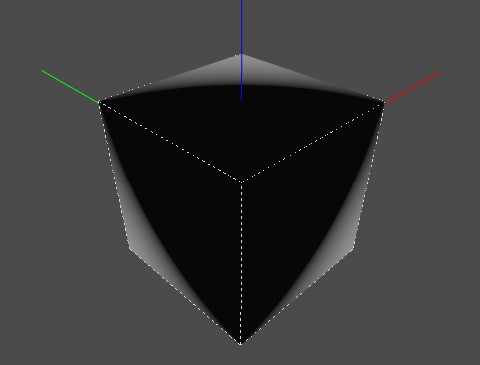usdgeom-mesh-winding-order#
Code |
VG.029 |
|---|---|
Validator |
|
Compatibility |
core usd |
Tags |
✅ |
Summary#
The winding order of faces in a mesh must correctly represent the orientation (front/back) of the face.
Description#
In order to correctly represent the orientation (front/back) of a face, the winding order of faces in a mesh must be correct. In OpenUSD, the winding order is defined by the faceVertexIndices array of a mesh and is running in counter-clockwise (CCW) order.
Why is it required?#
Visualization, culling and other algorithms rely on correct winding order to determine the front/back sides of a mesh. For example, when calculating shadows. Surface normals, which are used primarily for shading, should be consistent with the winding order to avoid potential artifacts.
Examples#
Inconsistent winding order#

Visual artifacts when the winding order is incorrect in Storm.#
# Invalid: Cube with flipped winding order for the top face
#usda 1.0
(
metersPerUnit = 1.0
upAxis = "Z"
)
def Xform "World"
{
def Mesh "Cube"
{
point3f[] points = [(-0.5, -0.5, -0.5), (0.5, -0.5, -0.5), (0.5, 0.5, -0.5), (-0.5, 0.5, -0.5), (-0.5, -0.5, 0.5), (0.5, -0.5, 0.5), (0.5, 0.5, 0.5), (-0.5, 0.5, 0.5)]
int[] faceVertexCounts = [4, 4, 4, 4, 4, 4]
# Indices for each quad face, CCW by default
# Let's flip the winding order for the top face (face 5)
int[] faceVertexIndices = [
0, 1, 2, 3, # Bottom (-Z)
3, 2, 6, 7, # Front (+Y)
2, 1, 5, 6, # Right (+X)
1, 0, 4, 5, # Back (-Y)
0, 3, 7, 4, # Left (-X)
4, 7, 6, 5 # Top (+Z) -- FLIPPED WINDING
]
}
}